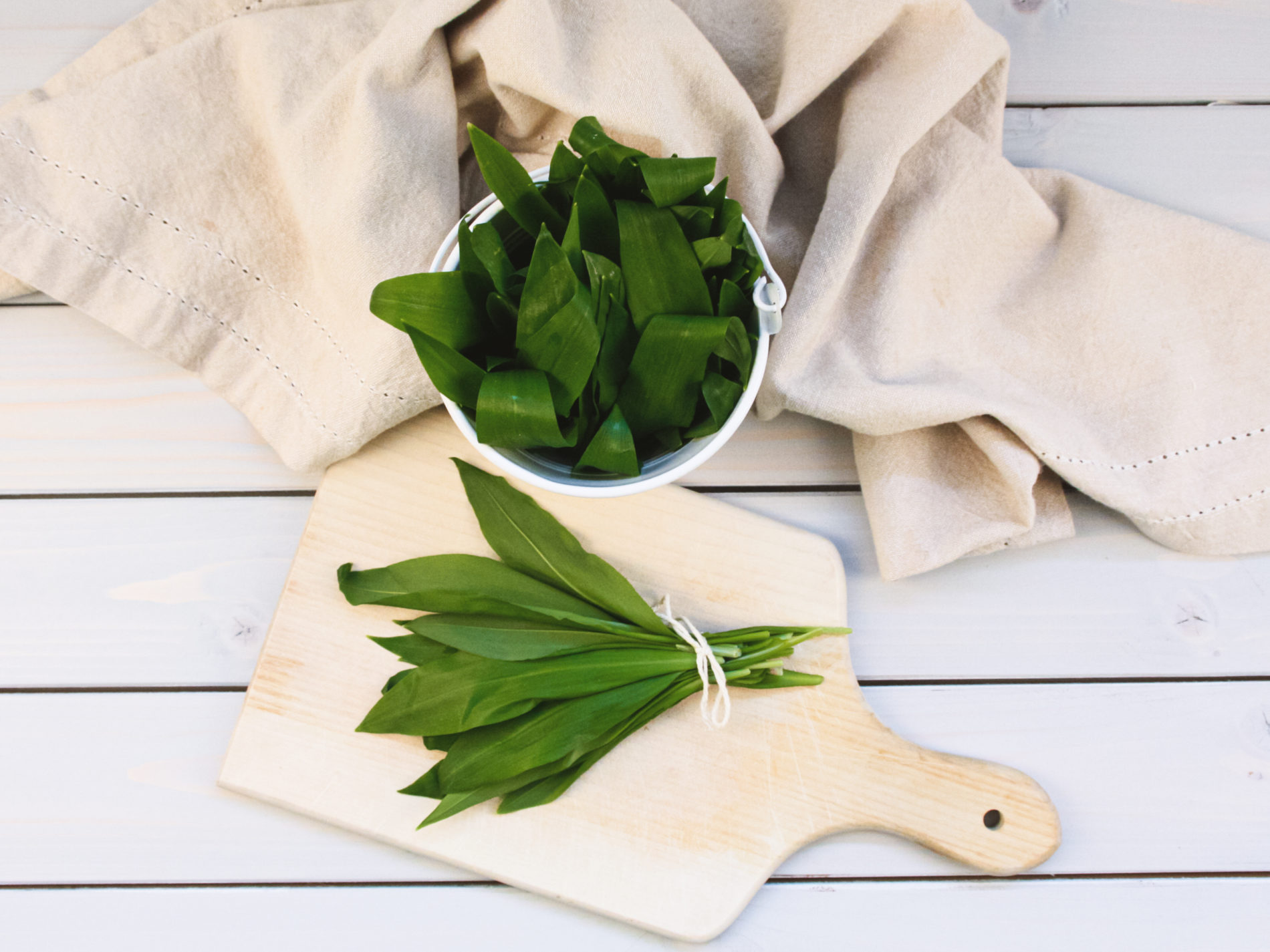Allium ursinum or wild garlic is one of the overlooked plants from the Allium genus. It’s a wild relative of onion and garlic and this might be one of the reasons why cooks usually tend to prepare it less frequently. The Latin name ursinum gave this plant its beautiful English names: bear’s garlic (or “leek”, this name is also used). Some argue that wild garlic, being one of the first greens that pops up in spring, is an important food staple for bears after they come out of hibernation.
This plant is a well-known ingredient in Russian and British cuisines. Any part of it can be eaten – bulb, leaves, and flowers. As you can say by the name, it has a distinctive garlicky flavour, perhaps only milder. Fresh leaves, when crushed, smell pungent, but when cooked, they lose much of the sharpness and turn out delicate and sweeter than you might assume.
Spring is the period when foragers set off for it in the forest. It grows in abundance, flower heads form beautiful whitish clusters. Chefs like its ornamentality, because they look pretty in salads and over hors d’oeuvres. In Russia wild garlic stems are preserved by boiling them in salted water first and then keeping them submerged in jars with that water diluted with vinegar. It’s then eaten as is. But it also can be added to salads, soups, pierogi. One quick and easy variant is to cut one bunch of marinated wild garlic, mix it with 1 thinly sliced red onion, 3-4 tbsp of aromatic unfiltered corn oil, season with salt and pepper, stir and leave in the fridge for 2 hours to let the flavours intermingle. Serve this flavorful dish with boiled potatoes, fried meats, fish or on top of a fresh piece of rye bread. Simple, unpretentious, great.
Another excellent option is to take 100 g / 3.5 oz of wild garlic, wash it, drain and pat it dry. Then take a pan, place it on medium-high heat, put 1 tbsp of butter in, let it melt and toss in your greens. Saute until golden brown, constantly stirring, then season with salt, pepper, and ground chilli pepper. Take from the pan, serve with a dollop of sour cream or yoghurt.
As for the leaves, they can be added to any preparation, but they are also eaten raw: added as one of the leafy ingredients in salads, mixed with cottage cheese or sour cream, incorporated in pesto-like sauces for pasta or sauces similar to Argentinian chimichurri (it is used as a condiment for grilled meats) or Venezuelan wasakaka (often served with chicken).











What do you think?